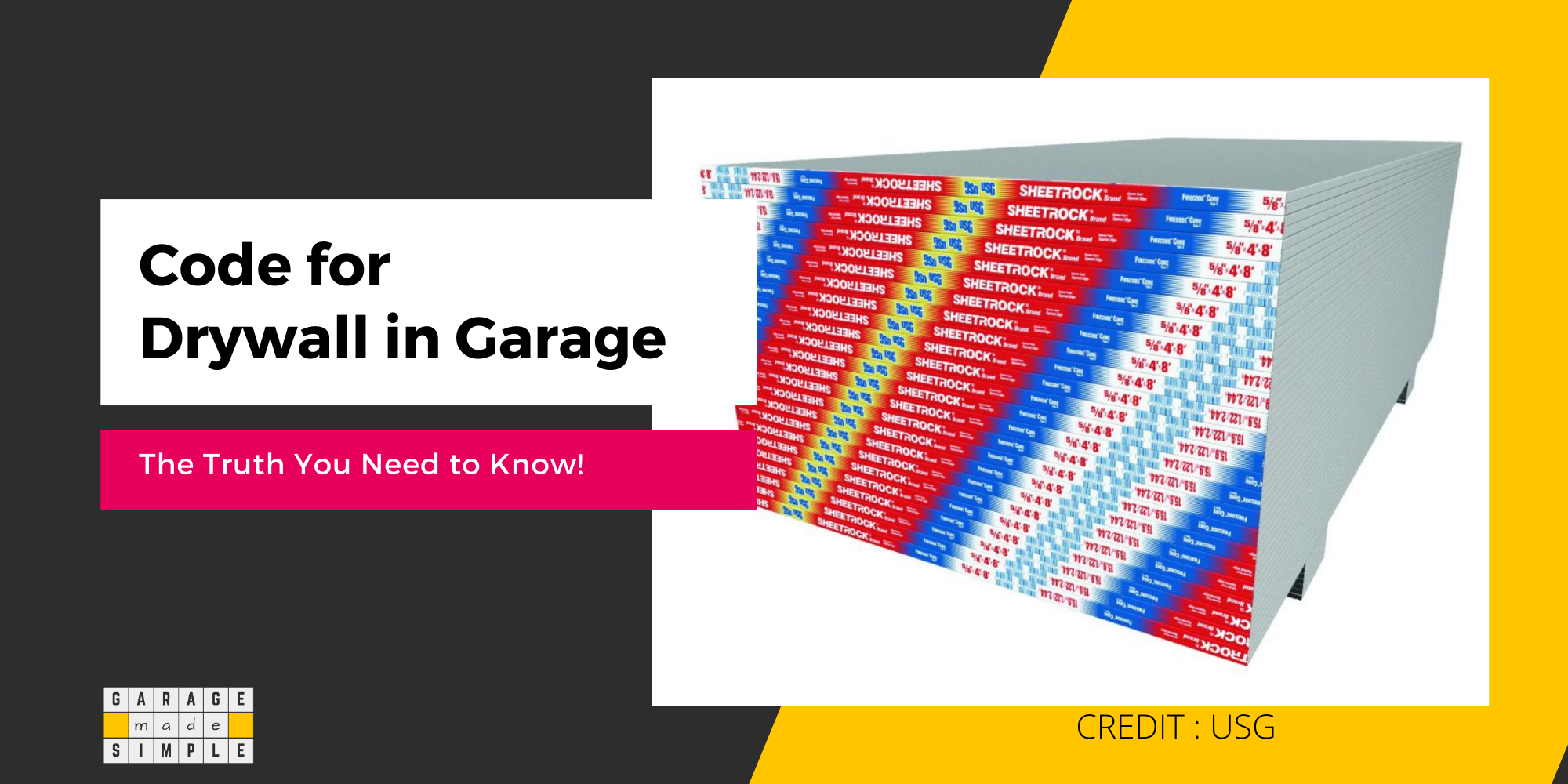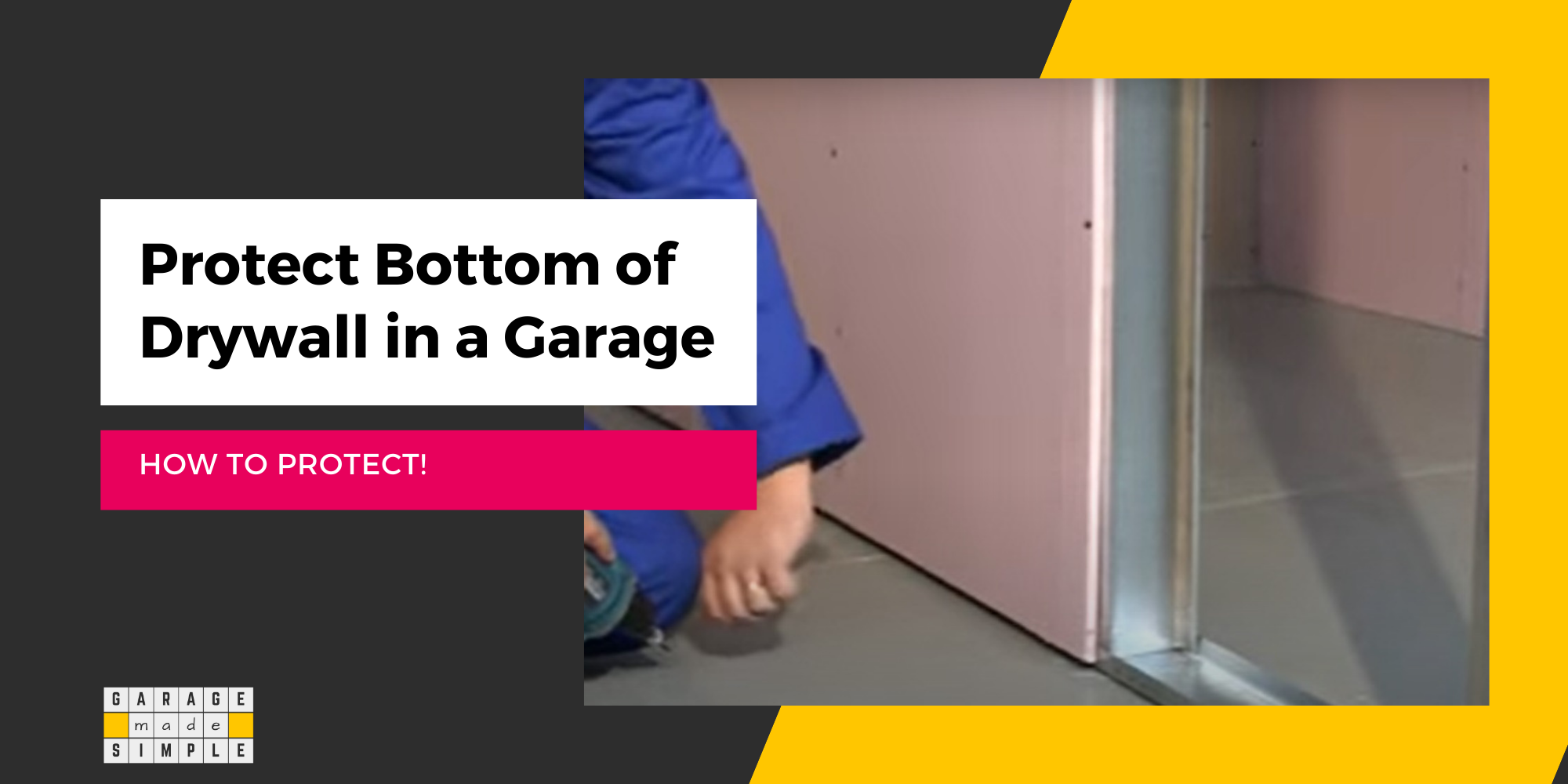Does Drywall in the Garage Need to Be Fire Rated? (Informative!)
garagemadesimple.com is a participant in the Amazon Services LLC Associates Program, an affiliate advertising program designed to provide a means for sites to earn advertising fees by advertising and linking to Amazon.com . The website is also an affiliate of a few other brands.
Does Drywall in the Garage Need to Be Fire Rated?
A garage, especially an attached garage, is considered a fire risk zone because it stores combustible materials, such as gasoline, paints and cleaning solvents. So does drywall in the garage need to be fire rated?
Garage walls & ceilings that are adjacent to habitable space must use material that is fire rated. Drywall is made from gypsum, which is a naturally fire-resistant material. Standard drywall has a fire rating of about 15 to 20 minutes.
Section R302.6 and Table R302.6 of The 2021 International Residential Code (IRC) requires that the separation between the garage and adjoining living quarters must be “not less than ½-inch gypsum board or equivalent”.
The separation between the garage and all habitable rooms above it must be “not less than 5⁄8 -inch Type X gypsum board or equivalent”.
Gypsum board is the same as drywall or sheetrock. So, it is obvious that IRC considers ½” drywall to naturally have a fire rating of 20 minutes. The fire rating of a 5/8-inch Type X gypsum board is typically about 1 hour.
Type X drywall is a specific type of drywall made with a special core. Type X drywall is thicker and heavier than standard drywall. It has a special coating or facing to further increase its fire resistance.

For more information on check out my earlier post Code For Drywall In A Garage? (The Truth You Need To Know!).
How Is Drywall Fire Rated?
It is important to distinguish fire rated construction materials and fire rated assemblies. Drywall is a fire rated construction material but the wall between the garage and your home must be a fire rated assembly.
For example, there is no point in using drywall if the entry door from the garage to the house is not fire rated.
Fire resistance-rated construction refers to building materials and assemblies that are designed to withstand fire for a specific period of time. The fire resistance rating of a material or assembly is a measure of how long it can withstand a fire before it begins to break down or allow the fire to spread.
Walls are typically fire rated by using materials that are naturally fire-resistant or by using fire-resistant coatings or treatments on other construction materials. The fire rating of a wall is determined by the materials used and the thickness of the wall.
NOTE: Fire ratings of drywall are based on laboratory tests. They do not accurately reflect real-world performance.
In a fire, the actual amount of time that drywall can withstand exposure to flames will depend on various factors, such as the intensity of the fire, the type of material that is burning, and the presence of other fire-resistant materials in the vicinity.
Is a Fire Rated Drywall Fireproof?
No, fire-rated drywall is not fireproof. It is designed to resist the spread of fire, but it is not completely immune to the effects of fire.
No building material is completely fireproof, but some materials are more resistant to fire than others. Examples include concrete and masonry, steel, gypsum, intumescent coatings, and fire-resistant glass.
How Is Fire Rating of Drywall Determined?
ASTM E119-20 (last updated on October 10, 2022) is recognized as the “Standard Test Methods for Fire Tests of Building Construction and Materials”.
The test exposes a test specimen to a standard fire controlled to achieve specified temperatures throughout a specified time period. When required, the fire exposure is followed by the application of a specified standard fire hose stream applied in accordance with Practice E2226. The test provides a relative measure of the fire-test-response of comparable building elements under these fire exposure conditions.
ASTM E119-20 is often used by manufacturers, builders, and code officials to evaluate the fire resistance of products and systems and to ensure compliance with fire safety codes and standards.
Thank you very much for reading the post. I do hope you found it informative and useful.







